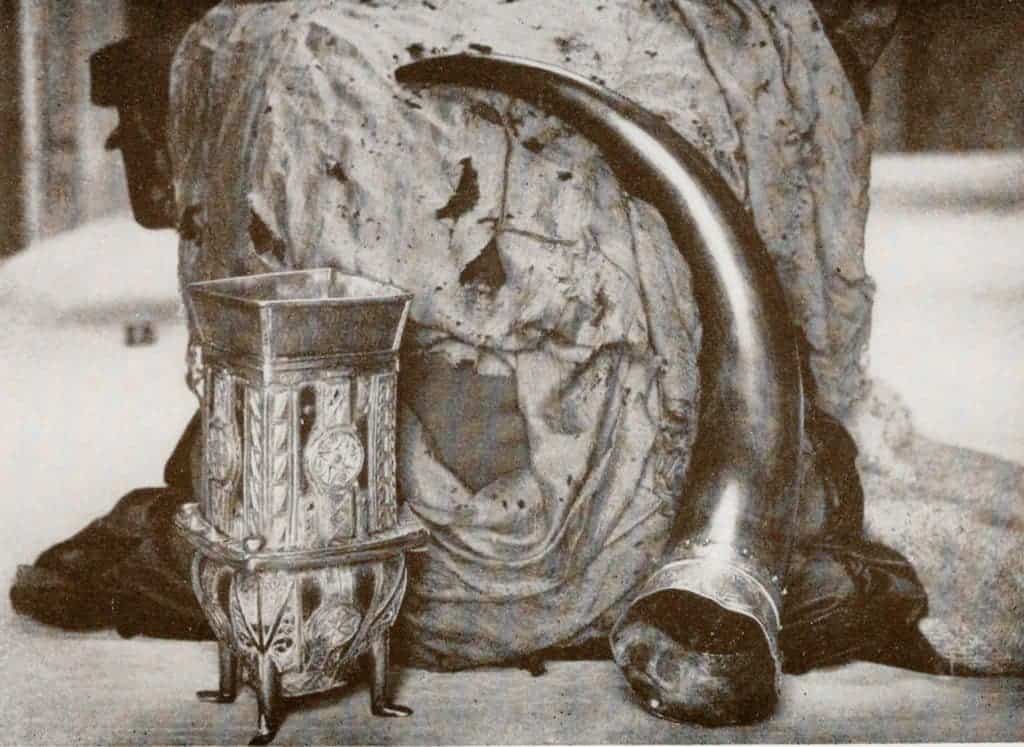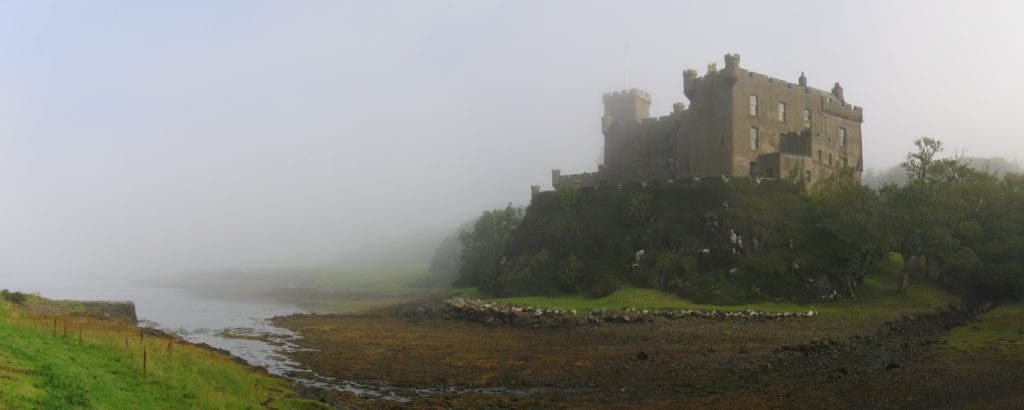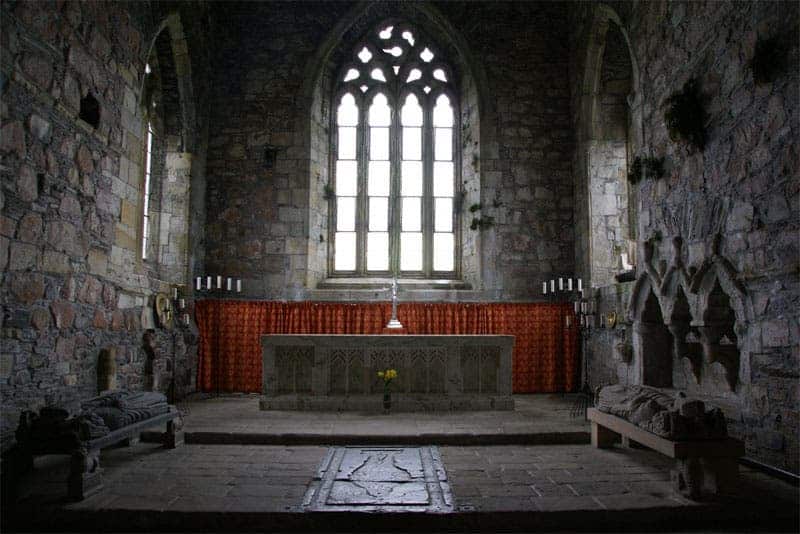
As legend has it, when King Harald Hardrada (a Norwegian ruler) went to conquer England, he took with him a magic Fairy Flag – supposed to bring him victory. Well, it didn’t do him much good because he was killed at the Battle of Stamford Bridge. The flag later emerged at Dunvegan Castle, in the Isle of Skye, in Scotland, as the most prized heirloom of the MacLeod clan.
Legends and history
It’s not clear how the flag got into the MacLeods’ possession – either a gift from the fairies to an infant chieftain, a gift to a chief from a departing fairy-lover, or a reward for defeating an evil spirit. But the flag likely originated somewhere far away from Scotland, potentially even in the Middle East. In the 20th century, A.J.B. Wace of the Victoria and Albert Museum examined it and came to the conclusion that the silk is either Syria or Rhodes, and the darns were definitely made in the Middle East. The most likely theory is that it comes from the time of the Crusades. Both Harald Hardrada and the early MacLeods spent time in Constantinopole, and some even believe that the clan descended from Hardrada. But the MacLeod estate claims that the flag was dated to at least a couple of centuries before the Crusades, so it may be even older than that. But I like the legends a bit more than that.

In 1772, Thomas Pennant made a tour of the Hebrides and later published an account of his travels. Among them, he wrote a few stories about the Fairy Flag. According to him, it was a gift to the MacLeods from Titania the “Ben-shi“, wife of Oberon, king of the fairies. It’s unclear why she gifted the flag, but another legend had it that the queen was in love with the clan’s leader. Titania blessed the flag to manifest its power three times. The first two times without consequence, but if the user would unfurl it the third time, she would come and take both the flag and the flag bearer, never to be seen again.
The first time the flag was unfurled, it was in an unequal battle between the MacLeods and the Macdonalds of Clanranald. Just as they were about to lose and its leader was killed, the flag was unfurled and the MacLeod forces were multiplied by ten, miraculously winning the battle (history claims they didn’t, but we’ll go with legend for now). The second time, the flag was unfurled to preserve the life of the lady of the clan. It was also unfurled a third time, but by then, it was so old and tattered that the fairy queen didn’t even bother to come for it. In other words, nothing happened.
The flag today

Some Scotts carried pictures of the flag during World War II, and some attribute the survival of the castle through Nazi bombings to the flag. In 1938, a fire broke out in a wing of Dunvegan Castle, and according to Sir Iain Moncreiffe of that Ilk, the flames were checked and extinguished when the flag was carried past to safety. Of course, all these are myths, little more than ancient superstition. But what better place for fairy legends and epic kings than the misty highlands of Skye? Dunvegan Castle, along with the flag itself, remain objects of fascination for locals and massive attraction for tourists.
The Fairy Flag today is ripped and tattered, probably why the fairy queen didn’t want it back. It’s covered with small red “elf dots”. In the early part of the 19th century, the flag was also marked with small crosses, but these have since disappeared. Modern analysis has revealed the silk to be extremely precious and rare which led some to believe that the flag may have been an important relic of some sort.
Either way, the flag has a most interesting history. Weaved somewhere in the Middle East, passed on to (or stolen by) a Viking King, who was then killed in England and then somehow returned to an island in Scotland. I’ll tell you what – the Fairy version almost seems likelier!
Was this helpful?



